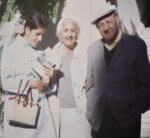or, “The Doom Loop of Righteous Indignation”
I have been having a lot of encounters with people lately who have very strong opinions about our political and humanitarian situations and global issues threatening our planet.
The thing is, I usually agree with whatever they are saying, since we all typically surround ourselves with those who think like us and agree with our point of view. But I hate the conversations. The energy between us feels negative before I have said a word and I begin looking for distractions or ways to change the subject.
As the conversation progresses (mostly one sided) I get more and more desperate to escape. Then, if it is a good day, I am able to find my curiosity and wonder what pain is driving this negativity. I look into the eyes of the person talking and they look angry and somewhat vacant. They are not really connecting with me, they are spewing rhetoric or perhaps well reasoned thoughts. But why the rant?
If I ask, (or they may tell me anyway), they say “We have to take a stand, we have to make a difference.” And I wonder how more righteous indignation and pain will make a difference in our world.
I listened to an inspiring dialogue yesterday between Russell Brand and Brene Brown. Their conversation spanned many topics, but inevitable led into politics and planetary concerns. They discussed how politics can never be separated from spirituality (Brene defines spirituality as love, compassion, kindness and oneness.) They conclude that since our politics are about humanity they must include these very human qualities.
The Pathwork teaches us about hard and soft pain. First we feel soft pain, then we cut off from these tender, vulnerable feelings and split into hard pain, kind of a doom loop. I see it as continuous loopy, angry, orange spirals. The hard pain keeps us thinking dualistically, saying “either there is something wrong with me or there is something wrong with you.” And it is repetitive and can be both addictive and disheartening.
We split from the soft pain because we have trained ourselves not to feel it and it requires the ability to bring together the dichotomy of both positive and negative qualities of the self and others into a cohesive, realistic whole. Splitting is a common defense mechanism. Most of us split into black and white thinking or good and bad thinking. But this is simply a strategy to avoid pain.
The way out of this doom loop is to notice when you are in it and trace your steps back to the soft pain. The anger and indignation turns to sadness, the grievances turn to grief. The magic of this process is that when we feel the soft pain it moves through us and settles us. We are now in our real selves, in our present moment. It is a relief and it is both simple and takes a lot of effort to do this over and over again each time we find ourselves hard and unfeeling.
Brene Brown suggests that what we are seeing today in our world is the last stand of “white male power-over” dynamics. She points out that last stands are always ugly.
One of my dear friends has made many trips to Wounded Knee in South Dakota, the site of a massacre of around 300 men, women and children. It is a pilgrimage for her. She is quiet about it but just keeps going back to one of the places of pain strongly symbolizing the dominance of “white male power-over” in this country. She seeks a deepening of her spirituality and she turns to a painful place for this.
What if we made pilgrimages to painful places instead of devotional shrines or aspirational holy ground? What if the painful place is the holy ground of being human? What if it leads us to know our humanity and that of others, versus pretending that our humanity is uniquely ours but is not granted to others, especially those different from us?

